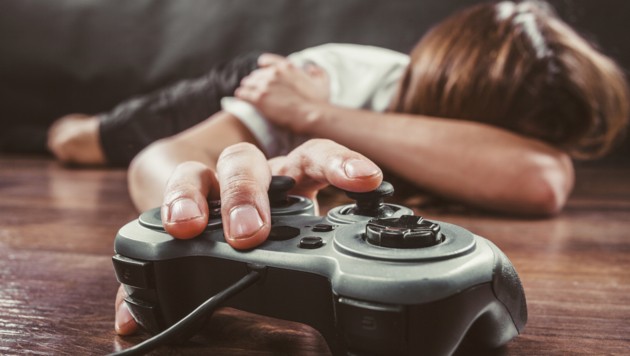
15.4 percent of minors are so-called risk gamers, so show a risky or pathological gaming behavior in the sense of a gaming addiction. This is the result of a study by the German health insurance DAK-health. Those affected are therefore more likely to miss school, have more emotional problems and spend significantly more money – which is why the health insurance now not only calls for more education about the risks, but also a ban on gambling elements in games, especially loot boxes.
According to the DAK study, 72.5 percent of young people in Germany regularly play computer games such as “Fortnite”, “FIFA” or “Minecraft”. Overall, almost 90 percent of all boys and just over 50 percent of girls play. According to an analysis by the German Center for Addiction Issues at the University Medical Center Hamburg Eppendorf, 15.4 percent of them show a risky or pathological gambling behavior. 3.3 percent of those affected even meet the criteria of a computer game dependency with withdrawal symptoms, loss of control or threats.
“A risky gaming behavior can lead to increased school problems,” explains study leader and search expert Professor. Rainer Thomasius. “Eleven percent of high-risk gamers are missing a week or more in school or training within a month. This is about three times more common than with unremarkable players. “The affected adolescents have more emotional or behavioral problems. For example, about 21 percent of gamers report worries and fears, while unremarkable gamblers account for only six percent. Significant differences also exist in concentration, motor restlessness or aggressive behavior.
Up to 1000 euros for games and extras

The DAK study “money for games” examined for the first time also the expenditure for computer games. More than half of the regular players bought games or extras during the six months prior to the survey. On average, the expenditure was 110 euros, with a peak of just under 1000 euros was called. Every third euro was spent on the computer games “Fortnite” and “FIFA”. In the extras, the money was mostly used for the so-called in-game currency or for fun and beautifying elements.
Six percent of the gamers said that the money for extras most likely to invest in loot boxes, which decide as in the game of chance “by chance” on the rest of the game. “The risk group is clearly more willing to spend money on games,” says search expert Thomasius. “For example, they put twice as much money in extras as unremarkable players. And the more pronounced the gaming behavior, the more money they invest in games. “
Time and money gambled

As a consequence of the current survey results, the health insurance company demands a ban on gambling elements in computer games as well as warnings for playing times and expenses. Furthermore, the health insurance company is strengthening its prevention and education. “Due to the tricks of the industry many young people find no end and gamble time and money,” says Andreas Storm, CEO of DAK-Health.
“For fun, it can quickly become addiction. Therefore, the gambling character must be contained in computer games. As in Belgium and the Netherlands, we need a ban on loot boxes or lucky wheels. In addition, warnings should be displayed to gamers when certain seasons are exceeded. “

